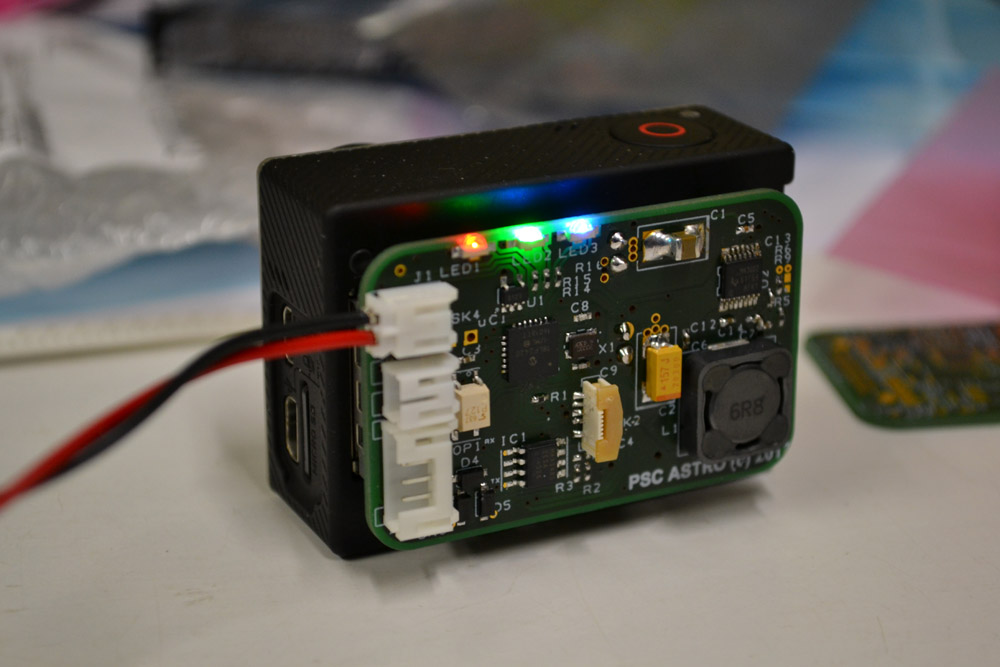Projects
ASTRO

A wired control and DC power unit for the GoProTM Hero 4 camera built last year. This is based on our previous work interfacing to various cameras and with open source work by MewPro mewpro.cc
This is especially useful when placing the cameras in places which are not easy to access or inconvenient to reach.
This plug-on module uses the 30-pin connector to interface to the camera. The following is a very brief specification.
- Camera: Hero4 Black with firmware version v3.0 and above.
- Functions: Power On/Off, Record On/Off, Default Mode Change.
- Trigger: Opto-isolated input trigger
- Power: 9-24V DC (Internal battery not required)
- Data: RS485 9600 bps
Advantages:
- Remote power and recording control with remote DC power options
- Time lapse intervals longer then 60 seconds possible (requires an intervalometer)
- Camera powered down during long Time lapse intervals reduces power requirement
- Camera can be triggered to switch on and record (seconds time delay to start) via external sensors.
- Operation and recording status can be received/displayed.
Disadvantages:
- WiFi cannot be enabled via this unit (to the best of my knowledge).
- Requires additional transmission paths to view images and audio.
- Need access to camera to recover recordings.
- Need access to camera to switch on WiFi if camera powers down.
A simple handheld button controller is used to operate the camera over a single RS485 cable pair. The camera can be powered over a second cable pair from a suitable 9-24 Volt power supply or battery. Interfacing RS485 to a PIR movement device or an intervalometer for long interval time lapse use will be easy to enable via the remote unit. A opto-isolated input is provided to trigger programmable functions such as “Turn On – Take a Photo – Switch Off” or “Turn On – Record Video (2 minutes) – Turn Off” as possible options.
RS485 systems can provide control over a distance of 1200 meters. A basic system, using a multicore cable such as CAT5 Ethernet cable or multicore alarm installation cable it is possible to send and receive control data, supply remote power and view a composite video feed and audio channel without using any complex connections or equipment over 50~100 meters. A more complex system might use a fiber-optic or wireless system to transfer HDMI 1080p and the RS485 signaling.


